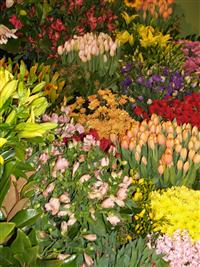
Work in the Dynamic Cut Flower Trade
Cut flower growing has experienced rapid expansion in recent decades, resulting in increased demand for training in the skills and knowledge required by this industry in increasingly affluent countries. This course provides a thorough basic training for the commercial cut flower grower.